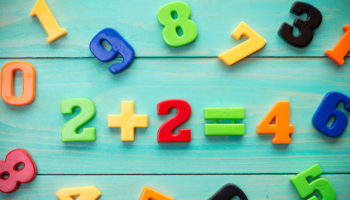Kweli Archie
A new research study published in the journal Child Development discovered eight key teacher actions that can make the difference between an average preschool classroom and an outstanding one. Led by Dale Farran, the associate director of Vanderbilt’s Peabody Research Center, a team of Vanderbilt University researchers spent two years (2014 – 2016) gathering data for this research study. Researchers partnered with the principals, teacher coaches and teachers in three different Nashville early learning centers. They collected data on teacher actions and student achievement across 26 preschool classrooms. All the participating teachers were certified in early education and held bachelor’s degrees. Each classroom also had an assistant. There was a maximum of 20 children per classroom with a total of 840 children.
Here is the list, branded “The Magic 8” by the principals of the three Early Learning Centers, included in this research study:
- Reduce time spent in transition. Time moving from one activity to another is time when children aren’t learning or engaged, which also increases the likelihood of negative behaviors.
- Improve level of instruction. Asking children open-ended, inferential questions and asking them to reflect on what they’ve learned or make predictions based on what they know improves student retention of new material and better prepares them for kindergarten.
- Create a positive climate. Using positive language to reinforce desired behavior rather than disapproving of specific student actions has a positive effect on children’s ability to self-regulate.
- Increase time teachers listen to children. Children whose teachers spent significant time listening to them showed a stronger grasp of math concepts, letters and sight words. Children who spoke more frequently also had stronger self-regulation and vocabulary skills.
- Plan sequential activities. When children participated in activities that followed a logical order, like completing a puzzle or writing a message, they engaged in higher level thinking, which improved their problem-solving skills.
- Promote cooperative interactions between children. Children who worked often with peers were more involved in classroom activities, had better language skills, and were better at self-regulation.
- Foster high levels of child involvement. Children are better at reading comprehension, vocabulary and math when they are actively involved in an activity, like when a teacher asks them to answer questions or make predictions about the book she’s reading.
- Provide math opportunities. Children who take part in multi-part math problems and discuss math concepts are better prepared for kindergarten and early math success, which is a strong predictor of late elementary school achievement.
Lead researcher Dale Farran remains committed to spreading the practical application of these eight concepts. Farran is excited to share these research findings to show what works in preschool programs. At the three early learning centers, the practice of “The Magic 8” has created more opportunities for children to engage in active learning and increased quality teacher feedback. As a result, these eight concepts have now been adopted by the City of Nashville as part of their high-quality Start for all Plan, championed by Nashville Mayor Megan Barry.
The resource for this blog was an article produced by The Hechinger Report, a nonprofit, independent news organization focused on inequality and innovation in education.
Updated Keystone STARS Performance Standards and Program Manual Now Available
Now available are the updated Keystone STARS Performance Standards and Program Manual effective July 1, 2018. Read more about these updates on the PA Keys website.
- 2018-19 Keystone STARS Performance Standards
- 2018-19 Keystone STARS Program Manual



